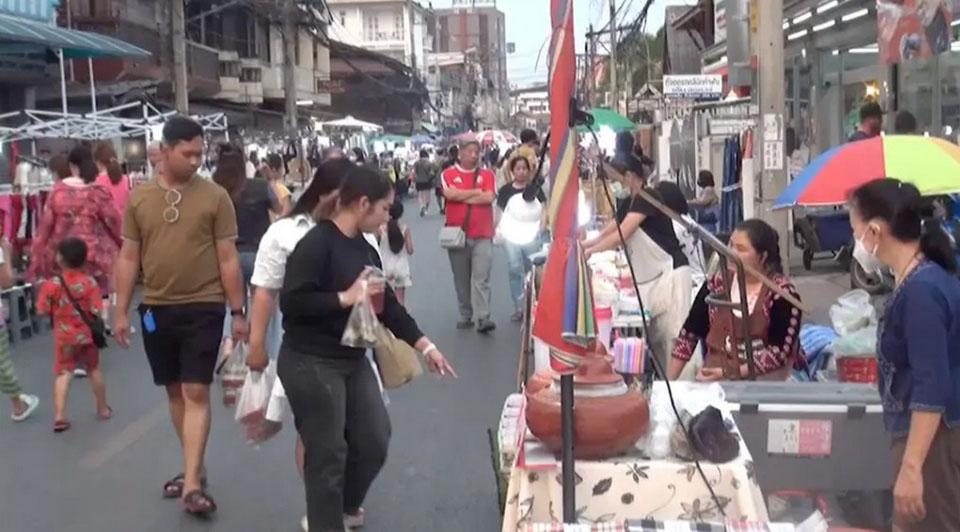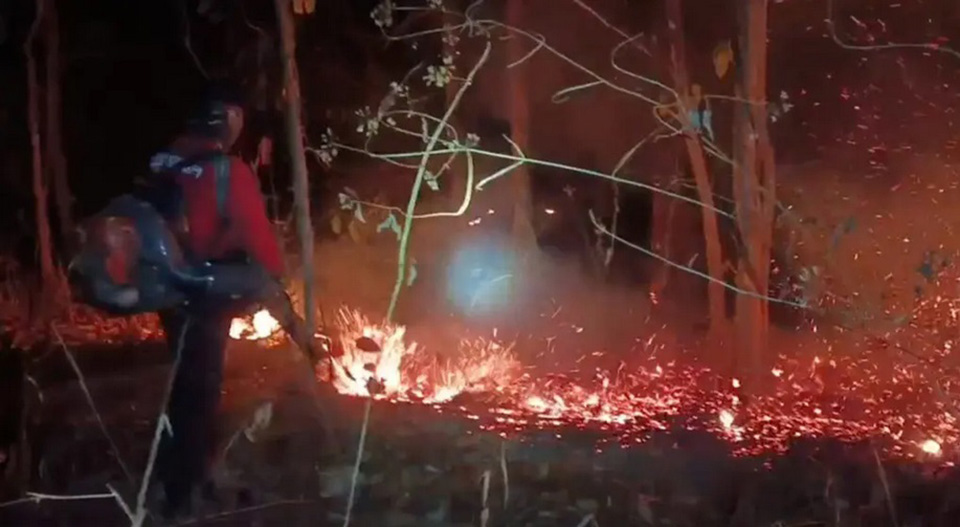
Chiang Mai continues to be ensnared in a crisis as thick smoke haze blankets the region, significantly reducing visibility and posing health hazards to residents. The situation remains dire, with the city’s skyline obscured by smoke, making it impossible to see buildings and homes even from vantage points atop Doi Suthep.
As of March 31, 90 hotspots have been identified across 17 districts, with the highest concentration in Chiang Dao, totaling 16 hotspots, followed by Hod, with 11, and Omkoi with 10. In some areas, wildfires have spread rapidly, reaching into forests and even burial grounds. Volunteers have been summoned to help extinguish fires to prevent them from encroaching on burial sites. Since January 1st to March 29th, there have been 4,127 instances of wildfires and 48 days of hazardous air quality due to excess pollutants.
According to data from the Chiang Mai University’s Air Quality Monitoring Center, PM2.5 levels at 8 AM reached 460 micrograms per cubic meter in Ban Arunothai, Chiang Dao district, and 454 in Ban Hua Tho, Chiang Dao district. Meanwhile, the communities of Muensarn and Night Bazaar in Muang district recorded PM2.5 levels of 206 and 160 micrograms per cubic meter, respectively. These alarming levels pose significant health risks to residents as the province topped second worst air quality in the world.
The deteriorating air quality has also impacted tourism in the city. While foreign tourists can still be spotted wandering the streets, the number of local tourists has significantly decreased. Many Thai tourists have refrained from visiting due to the smog, resulting in sporadic periods of calm along the city’s thoroughfares.
Local vendors, such as Rattana, who sells goods along the Walking Street of Wualai, expressed concerns about the drastic decline in tourism since February. She noted that while there were still many foreign tourists, the arrival of Thai tourists has dwindled, leaving her reliant on outdoor vending for up to seven hours a day, necessitating the use of N95 masks to protect against the smoke’s adverse effects.
As Chiang Mai grapples with this ongoing crisis, residents and authorities are urged to take immediate action to address the underlying causes of the wildfires and mitigate the health risks associated with the persistent smoke haze.









